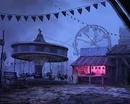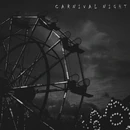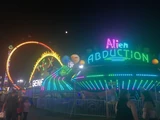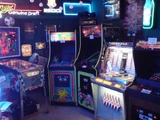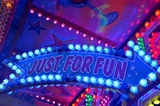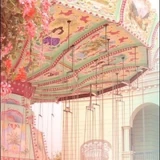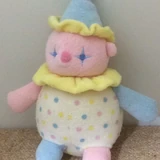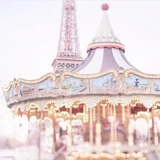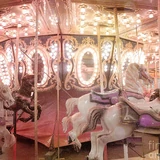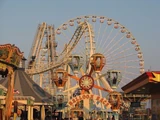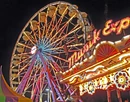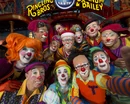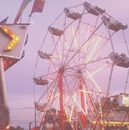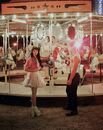Fanfare is an aesthetic surrounding circuses and carnivals, temporary events that involve spectacle, fun, and excitement because of their rarity, various rides and attractions, and interesting, sometimes mysterious people that operate the circus/carnival. Western culture has tropified imagery associated with circuses because of media and the traditions associated with going to these events.
These spectacles tend to be seen as outdated forms of entertainment with a folkish, almost tacky connotation. This is due to the fact that circuses were popular during the early to mid 20th century. Tradition has kept the visual imagery, with all of the events established during the Victorian era in P.T. Barnum's circuses. Past circus practices are also now seen as antiquated and abusive; lion-taming, seal clowns, and freak shows leaves a bad taste on modern audiences. They also are not as easily amused by clowns, "kiddie" rides, and live events, leading to decline.
Circuses may also have elements of fantasy. In fiction, it is not uncommon to have a circus be hiding the fact that the performers have actual magic powers that allow them to perform their stunts. So, the aesthetic can gain some mystique and elegance, with jewel-toned costumes, charismatic and flirtatious personalities, and an attractive form of danger.
Carnivals and circuses are two distinct types of spectacles, but have been associated with each other because they often overlap. Circuses put out rides in order to attract a wider audience and carnivals typically have stage shows that are the same as circus acts. Their temporary nature also forces them to use the same kinds of stands and tents as each other, and they also use the same type of imagery to bring excitement. Note that this aesthetic excludes amusement parks, water parks, and magic shows. Those are more permanent locations and have aesthetics that are more refined, put-together, and do not have the same visual tropes as fanfare.
Visuals[]
Circus acts and carnival attractions typically are seen as separate and evoke different emotions that are amplified with costumes, stage presence, and color scheme. In fanfare, all of these elements are combined, creating a varied yet cohesive aesthetic that utilizes this large range of different positive emotions to amplify the novelty associated with fanfare.
Performers[]
- Ring leader
- Elaborate costumes with top hats, coattails, and braided trim
- Clowns (See Clowncore)
- Trapeze artist
- Animal acts
- Bears
- Horses
- Lions
- Seals
- Tigers
- Strongmen
- Freak show
- Fortune teller and/or Spiritual Medium
- Costumes styled after stereotypes of Romani (G*psies)
- Crystal Balls
- Purple and gold tents
- Tarot Cards
Visual Tropes[]
- Striped Tents, especially red and white
- Pennant garlands
- Lightbulbs
- Fonts that are associated with vintage spectacle
- Hand-drawn posters
Food[]
- Candied apples
- Corndogs
- Cotton candy
- Funnel cake
- Popcorn
- Soft pretzels
Rides[]
- Bumper cars
- Carousel
- Ferris wheel
- Roller coasters
Activities[]
- Calling friends
- Playing arcade games
- Watching the clouds
- Playing tag
- Rides on Roller coasters
- Going on the big-wheel
- Riding the merry-go-round
- Watching clowns and entertainers
- Eating Candy floss
- Looking at neon lights
- Visiting Carnivals and Fairs
- Attending plays
- Dancing
- Laughing and chatting with friends
- Collecting fair game prizes
Cuisine[]
Foods included in this aesthetic are foods that are commonly found at carnivals. Including, but not limited to:
Food[]
- Candy floss
- Cotton candy
- Funnel cake
- Corn dogs
- Hot dogs
- Kettle corn
- Caramel corn
- Ice cream
- Dippin' Dots
- Soft serve ice cream
- Deep fried foods (Mars bars, Oreos, Twinkies, etc)
- Bloomin' onions
Drinks[]
- Soda/Pop
- Italian ice
- Slushy
- Lemonade
- Pink lemonade
Variations[]
Dark/Creepy[]
Dark and creepy carnivals/circuses are one of the most popular interpretations of the genre. People like to subvert the cheerful elements and emphasize the mystery, occult, and distrust associated with the carnies. The vintage nature of these events also lead to a run-down and decaying appearance. In this dark interpretation, the performers are depicted as malicious or troubled. They may utilize their talents for evil, such as magicians keeping guests trapped to experiment their acts on or clowns being insane ax-murderers. Supernatural beings, such as ghosts, monsters, and vampires may be running the event, intent on eating, haunting, or torturing the guests.
Neon/Electric[]
Neon and electric aesthetics are a popular contemporary aesthetic of the funfair (it is the traditional format, not contemporary circus). Many modern carnies have decided to partly break away from the primary colors of their profession to renew interest in the public. Here, the tents and stands are neon and glow-in-the-dark. Space and alien imagery is popular, with shows that are free from the outdated attractions of before. Trapeze acts, arcades, and rides are more prominent, with the events only operating at night.
Pastel[]
Pastel fanfare emphasizes the daytime, vintage, and lighthearted elements. As the name suggests, the images are more pastel with antique Rococo details. The most popular attractions here are carousels, Ferris wheels, dancers, horses, and clowns. There are also illustrations and statues of performing seals and bears with cute hats and pastel accessories. Sweets such as cotton candy and strawberry desserts are one of the most common photographic subjects.
Media[]
Circus-themed fiction is one of the most popular ways of consuming the aesthetic and reinforces many of the emotions and visual tropes described above.
Anime[]
- Black Butler: The Book of Circus (2014)
- Kaleido Star (2003)
- Karneval (2013)
- Popee the Performer (2000-2003)
Books[]
- The Night Circus by Erin Morgenstern
- Caraval series by Stephanie Garber
- Kingdom of Cards series by Janella Angeles
- Mysterium trilogy by Julian Sedgwick
Movies[]
- Freaks (1932)
- The Greatest Show on Earth (1952)
- The Greatest Showman (2017)
- Dumbo (1941) and (2019)
- Red's Dream (1987)
Theater Productions[]
- Ride the Cyclone
- Pippin
TV Shows[]
- Howdy Doody (1947)
- American Horror Story: Freak Show (2014)
- The Wild Wild Circus Company (series of CGI shorts from FunPak) (2004-2005)
- Are You Afraid of the Dark? (1990-2000)
Video Games[]
- ClayFighter (series) (1993-1998)
- Super Mario 3D World (2013) - some levels are circus-themed
- Circus Electrique (2022)
Music[]
Circuses are often accompanied by a certain kind of music, often a cheerful, fast-paced march played by a big band. Brass instruments, drums, and the Calliope are the instruments that compose circus bands.[1] The most prominent composer is Henry Fillmore, who served as a circus bandmaster and composed many of the famous songs typically associated with circuses today.[2]
Musical Artists[]
- The Tiger Lillies
- The Shanklin Freakshow/Mr. Strange
- Circus Contraption
- Evelyn Evelyn
Songs[]
- Alice's Magical Happy World by Natsuyama Yotsugi & Hatsune Miku
- Being For the Benefit of Mr. Kite! by The Beatles
- Carousel by Melanie Martinez
- Circus by Britney Spears
- Darktown Strutters Ball by Ted Mulry Gang
- Don't Dream It, Be It by The Rocky Horror Show
- Entrance of the Gladiators by Julius Fučik
- In The Good Old Summertime by Nat King Cole
- Merry-Go-Round of Life by Joe Hisaishi
- Le Manège by Paris By Night
- Los Coches Chocones by Los Desgraciaus
- Rose Tint My World/The Floor Show by The Rocky Horror Show
- Science Fiction/Double Future Reprise by The Rocky Horror Show
- The Yankee Doodle Boy by George M. Cohan
- "You're a Grand Old Flag" (American traditional/patriotic song)
Resources[]
External links to help get a better understanding of this aesthetic.
Playlists[]
- Dark Circus by Bridget


